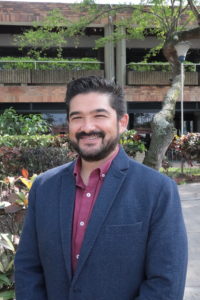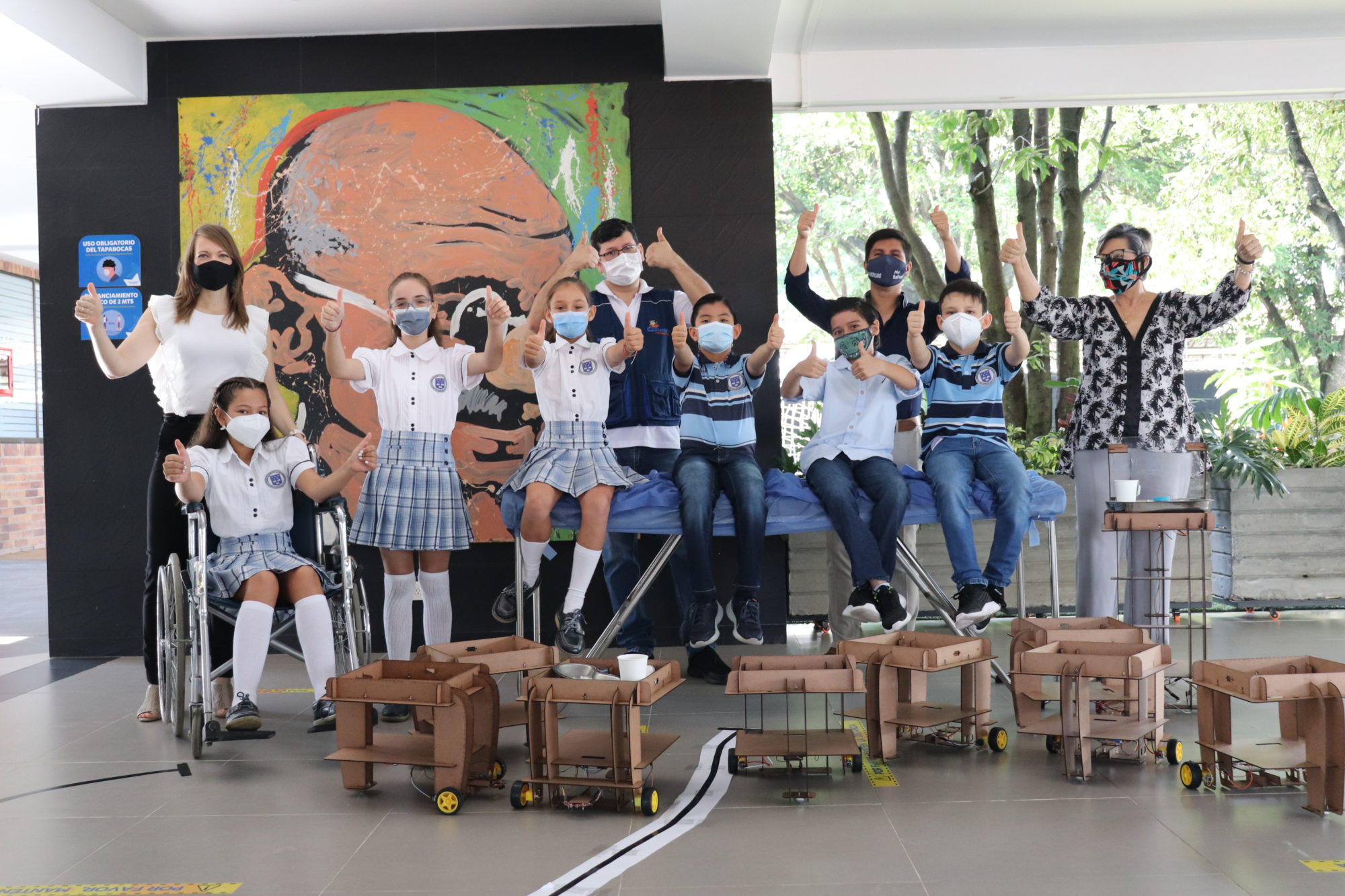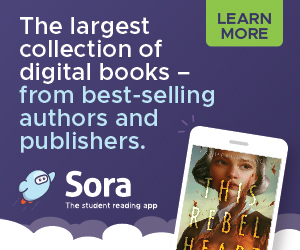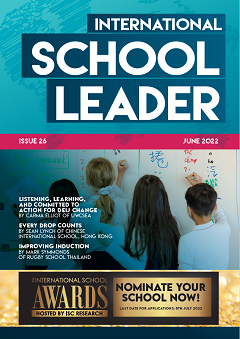By Daniel Yamasaki
Colegio Panamericano in Colombia won the Digital Technology in Learning International Schools Award 2022 for an interdisciplinary project-based approach to problem-solving that integrates digital technology.
Colegio Panamericano is a kindergarten to twelfth-grade school with a certified STEAM programme. Panamericano is located in Bucaramanga, Colombia, and uses a project-based learning curriculum to equip students for their future.
Students live in a digital ecosystem where the technology skills needed to be successful in the future are constantly evolving. Therefore, in 2017, our school created a model of technology education where Technology as a class lesson was eliminated from student schedules and integrated into all subject areas. This promoted digital technology as a major role in all interdisciplinary projects.
Developing an engineering mindset in the classroom
There have been several iterations of this project over the years. In 2021, COVID-19 spread worldwide and created a risk to caregivers who were caring for their families. Aware of this situation, the grade four students at Colegio Panamericano carried out an interdisciplinary project about the human body. The project aimed to answer the big question: how can we, as engineers, create a robotic device that can provide essential assistance to a patient with COVID-19?
This project integrated the areas of science, technology, engineering, language arts, mathematics, art, Spanish and physical education. First, the students explored the systems in the human body, specifically the respiratory system, through a variety of hands-on activities, including dissecting cows’ lungs. Second, they investigated the science behind COVID-19 transmission and learned that the virus passes through the air, so the physical distance from an infected person is necessary during treatment. Third, they used the engineering design process to understand the problem, generate ideas and use robotics to construct a solution.
Integrating this digital technology with real-life applications engaged students in an engineering mindset, adopting the values, skills and attitudes of an engineer. Students had to think critically and ask engineering-led questions such as: how is the human body like a machine? How do parts of the body work together to create a functional system? How are human body systems similar and different from robotic systems? Through investigation, they explored answers and co-constructed explanations. Based on their research, the students’ response to the big question was to design and build an autonomous, line-following robot prototype that could bring food or medicine to a COVID-19 patient, thus maintaining a safe distance for caregivers.
Responding to real-life challenges within learning
Student collaborative work was not easy during hybrid learning since student attendance on campus was limited. In addition, not all group members could be on campus at the same time. So students took turns building the mechanical system, assembling the electrical system and coding the Arduino UNO control board. With cooperation and flexibility from teachers and parents, the students were able to test their prototypes and improve their model.
Through this project, students transformed into authentic global collaborators, assuming the responsibility to investigate a pandemic that was evolving around them and to solve a real-life, relevant problem, working with their peers towards a common goal of helping their community. In addition, developing their use of the digital tools gave them a greater perspective of the power that technology has to transform the world and help those who need it.
The fourth-grade teachers knew that any exhibition of student work would need to be virtual. So, in addition to inviting parents to view the final product through a Zoom meeting, they also asked local and national television stations. As a result, in March 2021, a camera crew came to school to film a demonstration of the nurse robot. Later that evening it was broadcast on Colombian national television. It was extraordinary to see our fourth-grade students as young ambassadors of innovation and creativity using digital technology in such a complex global crisis.
How teachers can develop upon project-based problem-solving
This is one of the interdisciplinary projects being used to train and inspire teachers new to project-based learning. Our teachers continually refine and improve their projects year after year, incorporating broader knowledge integration, increasing the complexity of the skills and looking for ways for students to exhibit and share their solutions.
When passionate and skilled educators encourage students to see the world through a problem-solving lens that integrates digital technology, the solutions they come up with can be truly inspiring. These elementary-aged students may not grow up to be engineers or doctors, but the lessons they learn from this project and the compassion it helps them develop for others will make them future ready.
Daniel Yamasaki is Director of Colegio Panamericano in Colombia. Connect with Daniel directly on LinkedIn




